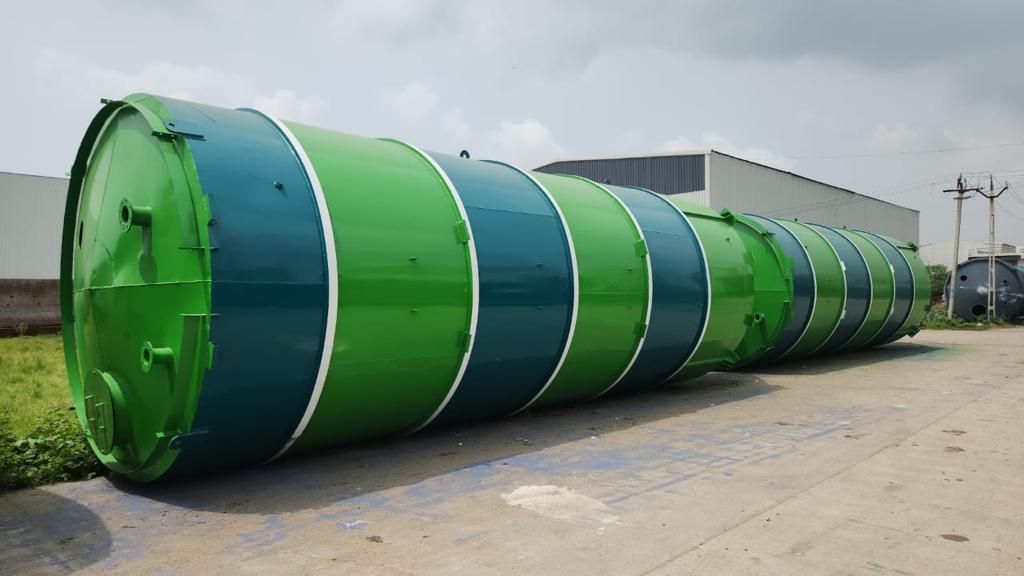Get In Touch
Get In Touch




A horizontal silo is a low-profile storage structure used to store bulk materials, such as grains, cement, or feed, in a horizontal configuration. Unlike vertical silos, horizontal silos are designed to sit close to the ground, making them easily accessible for loading and unloading. They often feature airtight seals, temperature control systems, and advanced material-handling equipment. These silos are widely used in agriculture, construction, and industrial applications to efficiently store and protect bulk materials, ensuring a controlled and organized supply for various processes while minimizing the risk of material degradation and spoilage.
1. Material of Construction: Specify the material used for the silo's construction, which is typically steel, concrete, or other durable materials.
2. Capacity: Define the storage capacity of the silo, measured in tons or other appropriate units, considering the specific material being stored.
3. Configuration: Describe the horizontal configuration of the silo, which typically consists of a low-profile, elongated structure with a flat or slightly sloped base.
4. Discharge System: Detail the mechanism for material discharge, which may involve screw conveyors, belt conveyors, augers, or other conveying systems.
5. Sealing: Specify the type of sealing mechanism employed to maintain an airtight and moisture-tight environment within the silo to preserve material quality.
6. Temperature Control: If required, outline the temperature control features, such as insulation or ventilation, to protect the stored material from extreme temperature fluctuations
7. Load Cells: Consider the inclusion of load cells or weight sensors for accurate monitoring of material levels within the silo.
8. Safety Features: Include safety measures, such as emergency stop buttons and access doors with interlocks, to ensure safe operation and maintenance.
9. Level Indicators: Specify the level indicators or sensors used to monitor the material level inside the silo, which can include ultrasonic, radar, or rotary paddle indicators.
10. Access Points: Detail access points for loading and inspection, including hatches, manholes, and ladders for personnel access.
11. Environmental Controls: Incorporate environmental controls for dust collection and ventilation to maintain air quality and prevent environmental issues.
12. Foundation: Ensure the silo is placed on a stable foundation capable of supporting its weight, with provisions for drainage and protection against settling.
13. Customization: Consider any customization required to meet the specific needs of the material being stored or the industry/application.
14. Compliance: Ensure that the silo complies with relevant industry standards, safety regulations, and local building codes.
15. Documentation: Provide comprehensive documentation, including user manuals, engineering drawings, and maintenance guidelines.
16. Maintenance Requirements: Detail routine maintenance tasks, schedules, and procedures to ensure the silo's continued functionality.
17. Transportation: Consider transportation logistics if the horizontal silo needs to be moved or relocated to different sites.
1. Agriculture: Used for the storage of grains, seeds, and animal feed, providing farmers with a controlled and organized supply of essential materials.
2. Construction: Ideal for storing bulk construction materials like cement, sand, aggregates, and concrete mixtures, ensuring a consistent supply to construction sites.
3. Concrete Batching Plants: Horizontal silos are employed to store cement and other raw materials for the production of concrete, ensuring a continuous supply for batching operations.
4. Road Construction: Used at road construction sites to store and dispense asphalt mixtures, making it easier to meet the asphalt supply demands of paving equipment.
5. Mining and Quarrying: Applied in mining operations for storing and dispensing bulk materials such as ores, coal, and minerals to support extraction and processing activities.
6. Food Processing: Utilized for storing and handling bulk food ingredients such as flour, sugar, rice, and grains in food processing facilities.
7. Cement Industry: Ideal for storing bulk cement, which is critical for the production of concrete, mortar, and other construction materials.
8. Manufacturing Plants: Horizontal silos are used in manufacturing facilities to store bulk materials like plastics, chemicals, and resins, supporting various production processes.
9. Waste Management: Found in waste-to-energy facilities to store RDF (Refuse-Derived Fuel) or other waste materials, which are then used for energy generation.
10. Environmental Remediation: Applied in environmental projects to store and dispense materials used for soil stabilization, contamination control, and pollution remediation.
11. Petrochemical Industry: Used for storing and managing bulk petrochemical products and raw materials in petrochemical manufacturing and refining facilities.
12. Biomass and Renewable Energy: Horizontal silos are employed to store biomass materials such as wood chips or pellets for use in biomass power plants and renewable energy production.
13. Heavy Equipment Maintenance: These silos store bulk lubricants, oils, and greases for heavy equipment maintenance and servicing facilities.
14. Transportation Terminals: Used in transportation hubs, such as ports and rail yards, for the storage and distribution of bulk cargo like coal, ores, and minerals.


